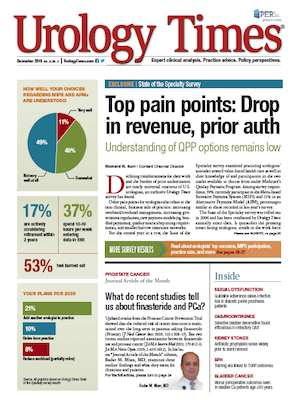Publication
Article
Urology Times Journal
Inherited retirement accounts: What are your options?
Author(s):
Avenues for taking distributions vary according to the decedent’s age.
Wrangler - stock.adobe.com


I had a parent recently pass away and I was named the beneficiary on their 401(k). What are my options?
Losing a loved one is always difficult, and to make things tougher, some important financial decisions often need to be made soon afterwards. If you were named the beneficiary on a retirement account such as a 401(k), 403(b), or IRA, you typically have a couple of options for handling this inheritance. If the decedent was a spouse, there is a wider range of options, but in this case we will focus on non-spouse inherited retirement accounts.
If the decedent was under age 70½, you as the non-spouse beneficiary can keep the money in the existing account but must take distributions in one of two ways. You can choose to distribute the entirety of the account no later than Dec. 31 of the fifth year following the year the account owner died. Alternatively, you can elect to distribute the account in one lump sum. In either case, you will not be charged the 10% early withdrawal penalty if you are under age 59½; however, you must include the distribution in your income and pay income taxes on it.
Also by Jeff Witz, CFP: As 2020 approaches, it’s time to review your financial strategies
Depending on the size of the account, the distribution could push you into a higher tax bracket. It’s best to consult with a tax professional to determine the appropriate distribution timeline.
Another option is to transfer the money from the decedent’s retirement account into an inherited IRA. These accounts are specifically designed for retirement accounts inherited by a non-spouse beneficiary and allow you to distribute the money based on your life expectancy instead of the decedent’s. Each year, you are required to distribute a portion of the account based on the previous year-end account value and your IRS life expectancy factor. For example, if the account value was $100,000 on Dec. 31, 2018 and you turn 45 years old during 2019, you would divide $100,000 by your IRS life expectancy factor of 38.8. Your resulting required minimum distribution (RMD) would be $2,578 for this year, and it must be taken by Dec. 31 and included in your taxable income for the year.
Note: Unlike your own IRA, which allows for the IRS factor to be taken from published tables, inherited IRA factors are generally calculated based on the age the beneficiary will attain the year after the original account owner’s death, then reduced by 1 for each subsequent year.
Next:"While you can always take out more than the RMD each year, you must take at least the calculated amount or the penalty for failing to do this is severe."While you can always take out more than the RMD each year, you must take at least the calculated amount or the penalty for failing to do this is severe. You must pay a 50% tax on any amount that fell short of the RMD. It is important to remember that each year, the RMD must be recalculated since the year-end account value as well as your life expectancy factor will change.
The primary benefit of taking the inherited IRA route is that you can spread the distributions over a longer period of time, leaving the remainder of the account invested to hopefully continue growing tax deferred.
If the decedent was over age 70½, you also have two options for distributing the account. Since they were already taking RMDs at the time of death, you can continue withdrawing the RMD based on their IRS life expectancy factor, meaning you are not forced to distribute the full amount in the 5-year window. You can take out more than the RMD but not less or else the 50% tax applies. The other option is to move the money into an inherited IRA and base the RMDs off your own IRS life expectancy factor as described above.
Read: How term life insurance can help ensure financial goals are met
The rules for non-spouse inherited retirement accounts can be complex, so we recommend discussing your options with your financial adviser or tax professional.
What are my options if a non-spouse inherited account was a Roth account?
If you inherit a non-spouse Roth retirement account, special rules apply. Roth accounts don’t grow tax-deferred (they grow tax-free), and they don’t normally have RMDs. However, if you are a non-spouse and inherited the account after their death, you will be required to make distributions. You must distribute the funds either within the 5-year window, based on the owner’s IRS life expectancy factor, or you can move the money into an inherited IRA and distribute based upon your IRS life expectancy factor.
These are valid options regardless of the decedent’s age. As long as the money has been in the Roth account for more than 5 years, no taxes will be owed when the money is distributed.
The information in this column is designed to be authoritative. The publisher is not engaged in rendering legal, investment, or tax advice.

Newsletter
Stay current with the latest urology news and practice-changing insights — sign up now for the essential updates every urologist needs.




























